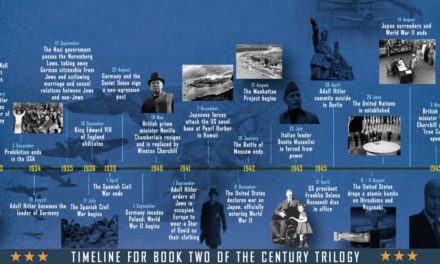Fall of Giants is the first book in Ken Follett’s 20th century trilogy that includes Winter of The World and Edge of Eternity (coming out on September 16).
I read Fall of Giants when it first came out in September 2012. Then, I started reading Winter of the World a year later when it was published, but I had forgotten too many details from the first book. So, I decided to read the three books one after the other, starting this summer, which is quite a feat considering that the first two are 960 pages each, and the third one is 1120. But, who cares, I read on my Kindle, and we’re talking about Ken Follett, 1000 pages just leave you wanting for more.
I finished Fall of Giants two weeks ago, and will soon start on Winter of the World. Yes, you got me. I had planned to write these book reviews as soon as I finished reading a book, but it’s the summer and I had things to do (like take my kids to Disney), as you might know by now.
But, anyway, Fall of Giants is historical fiction, a lot of history and a lot of fiction. It tells the story of World War I and the events that led to it through the lives of five families: two English (one rich, one poor), one German, one Russian, and one American. Families that interact with one another and with historical characters like Woodrow Wilson, Winston Churchill, Lenin and a host of others. The fictional characters are so well-developed that it’s hard to believe that they really never existed. The story of their lives are told in the framework of the political and social events of the time and, of course, also in the midst of war.
Follett combines history, fiction, huge world developments and small personal details in a fascinating way, and also adds a dash of sex to spice things up, or perhaps to show his characters’ humanity, or both.
I remembered quite of bit of history from high school reading this book, and I wonder if high schools would assign this book today. But, I guess the sex scenes would disqualify it. I also learned a few new things. For example, Britain’s role in Russia after the end of World War I trying to destabilize the new communist regime in development. This is told at the end of the book, and it was the only section I found a bit harder to follow as there was a wealth of historical detail packed together in a few pages, and I had been used to a more balanced history/fiction mix in the previous 900+ pages. It could also be that, flying from one time zone to another, my jet-lag was getting in the way.
I highly recommend this book. Read it if you’re interested in history, in what happened to our world in the 20th century. But even if you’re not interested in history, read this book for the characters and for the page-turning pace that will leave you satisfied, informed and wanting more.
Fortunately, there’s a lot more to come.











